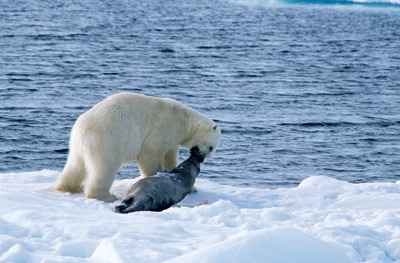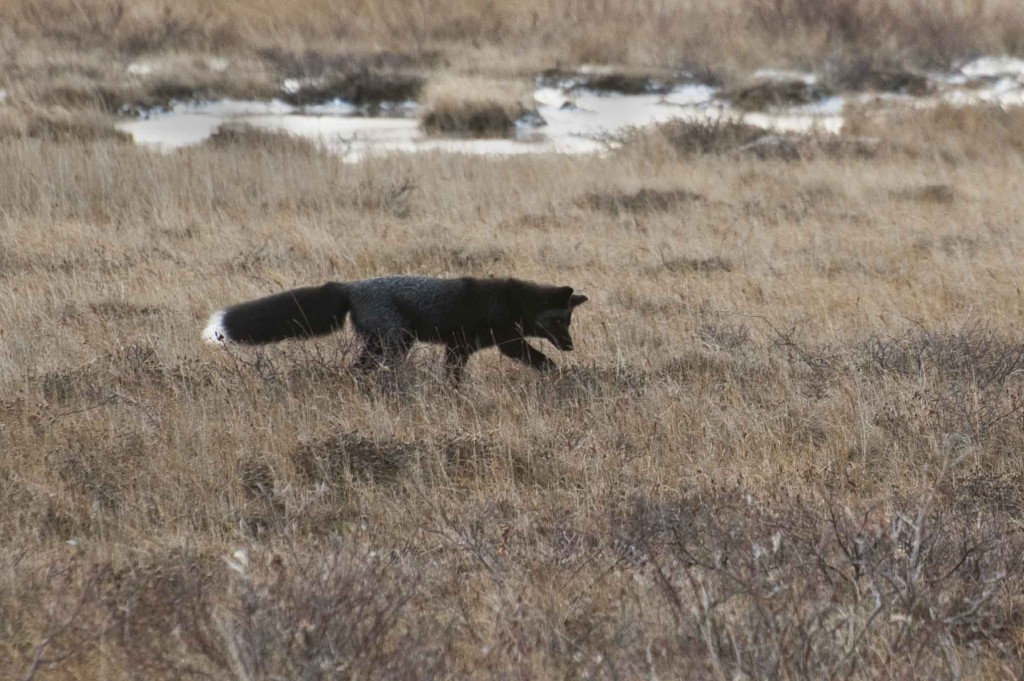Polar Bears on Ice – The Sea(l) Ice Dilemma
Seals, particularly ringed and bearded seals, don’t care too much about the polar bear’s plight of reduced sea ice. True, seals need the ice – pack and ice – floes to build their dens to birth and raise their young. However, they would not mind one bit if there were no polar bears around to stalk them in their blowholes and crash through their dens on the ice in order to devour their young and occasionally adults as well. No, as far as seals think, polar bears could disappear all-together and they wouldn’t have to keep one eye open constantly while they are dozing on the ice in between dives below the surface.
What seals don’t know is they also need to worry about global warming and reduced sea ice in the Hudson Bay and other far northern Arctic regions. Without the ice surface there would be nowhere to build their dens and rear their young near accessible food sources in the ocean. Well, who knows, maybe they do know this and we’re not giving them enough credit. Anyway, the end result is, without sea ice, polar bears cannot hunt their staple prey of seals and seals cannot rear their young pups that are eaten by polar bears. The complex web of life.

Polar bear with a seal kill. Rinie Van Meurs photo.
Polar bears also take adult seals by getting the scent from a distant blowhole utilized by seals to surface periodically. Seals form these access holes in the fall when the ice is softer and less thick. They maintain them throughout the colder months by constantly surfacing and descending in order to prevent ice layers from forming in the hole. Polar bears get very low as they approach the hole and sometimes even dive in to snatch the seal with their sharp, agile claws. When a bear emerges with the kill, they will often share with other polar bears that approach very timidly while nudging the hunter with their noses asking in a way to partake in the meal.

Polar bears gather to feed on a beached whale carcass. Daniel Cox/Natural Exposures photo.
Polar bears are opportunists. In essence they have the ability to find alternative food sources when needed if seals are unavailable. In recent years polar bears have been observed seemingly more active on land or in shallow coastal water hunting seals and beluga or other whales. Scientists wonder if this is a reaction to the shorter sea – ice season. Are polar bears adapting to changing climate conditions?
Only time will tell with regards to the polar bear’s ability to adapt to changing climate and ice conditions resulting from global warming. Seals will have to adapt as well in order to survive and propagate their species. Also, just maybe humans, the wildcard in the equation, can reduce carbon emissions to reverse the trends we are seeing now in the Arctic!




